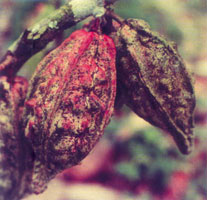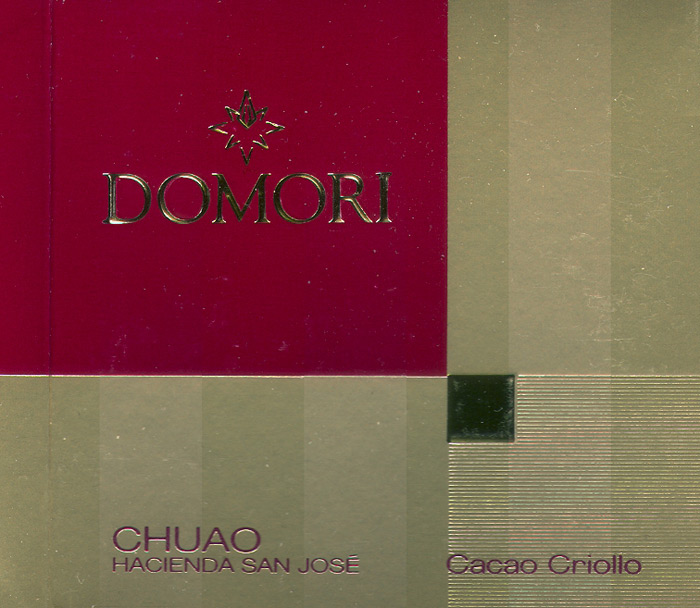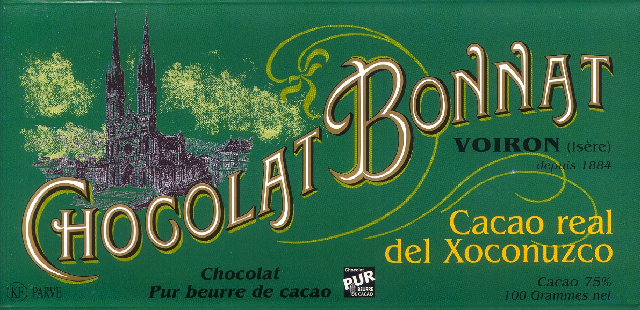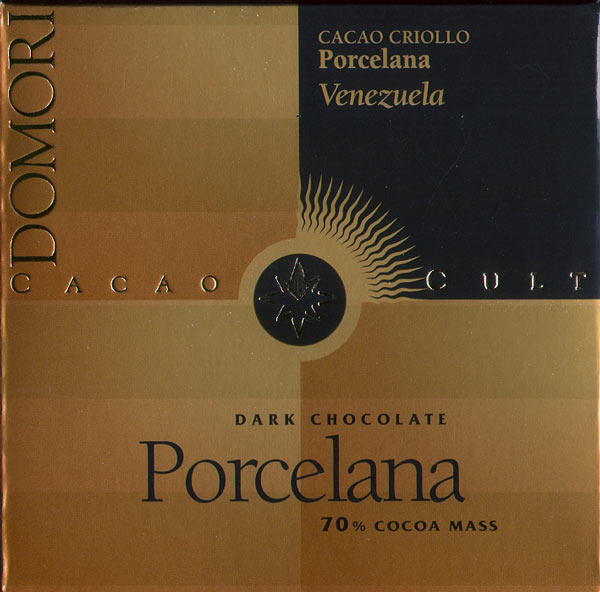 GEN’L FLAVOR PROFILE: Naked to Fruits/Flowers; fine acidity (particularly lactic acid producing inherent cream tones for ‘strawberry ‘n cream’ effects); coconut, bread, a plethora of subtle overtones like buttery nuts / caramel, florals & fruit jam &, most importantly, pure cocoa flavor; the effect almost always rich & smooth, compounded by finer cacáo-butter content compared to other varieties
GEN’L FLAVOR PROFILE: Naked to Fruits/Flowers; fine acidity (particularly lactic acid producing inherent cream tones for ‘strawberry ‘n cream’ effects); coconut, bread, a plethora of subtle overtones like buttery nuts / caramel, florals & fruit jam &, most importantly, pure cocoa flavor; the effect almost always rich & smooth, compounded by finer cacáo-butter content compared to other varieties
GEN’L CHARACTERISTICS: single vertical branch (plagiotropic) typifies Criollo trees instead of the usual 5 exhibited by other varieties; warty elongate fruits with nipple-like apex; thin soft skin; much larger but far fewer seeds (rarely exceeding 50 per pod, & usually 30 to 40, further lessening chances to reproduce); &, most characteristically, a red blush generated by the anthocyanin pigment for red-colored pods, some holding sugared pulp; requires shortest time to ferment & quickest low-temperature roast due to fewer tannins (resulting in little if any bitterness), thus preserving primary compounds of delicate flavor from terpene hydrocarbons thought to be responsible for its flavor aromatics
Ancient classic varietal; experienced the highest degree of cultivation in pre-Columbian times, naturally selected for traits prized by Mesoamericans for over 1,500 years that were so fine it could be relished without any additives whatsoever (sugar, vanilla, chili, etc.).
Criollo (Theobroma cacao ssp. cacao) means “native” in Spanish, a term conquistadores used when referring to cacáo in Mesoamerica & along the northern coast of South America before they mixed it with other varieties. Its ancestral homeland centers around one of 3 possible places: a) a vanishing view holds to the West Coast of Honduras; b) the middle perspective claims Lake Maracaibo in present-day Venezuela (the foothills of the Sierra de los Motilones in the Andes Mountains); c) most likely, the Chessman theory that it hails primordially from the Amazon Rainforest – like virtually all other cacáo – a descendent of the rainforest’s red-fruited trees, evolving from them via mutation & dissemination.
Genetic researchers Motamayor & Lanaud have compared Ancient Criollo from Central America & find it closely related to Criollo from South America. Their RFLP & microsatellite analysis reveals high homozygosity / low genetic diversity, suggesting it probably originated from a few cacáo trees in South America that may have then been spread by ancient travelers up to the north. In fact, Ancient Criollo trees are closer to Colombian-Ecuadorian Amazon types than those Colombian-Ecuadorian trees are to other South American Amazons, supporting the notion that such diversity infers a species point of origin as well.
In the wild, Criollo survived quite well for centuries. But under cultivation it reacts like an operatic prima donna: a sexual inbreed producing lower genetic diversity, the fewest seeds, & fluctuating annual yields while evincing a delicate thin-skinned nature / fragile make-up – hence, susceptible to pestilence & shorter lifespan – all leading to what’s clinically known as consanguine or inbred depression which can have disastrous effects in plants as much as in humans (the collapse of the Hapsburg Empire due to incestuous intermarriage is just one illustrative example).
Then, in a vicious circle, simple organic chemistry takes over from there & aggravates the problem. Compared to other strains, Criollo seems to possess fewer polyphenols, a bitter acid compound deployed as a defense by the fruit to ward off predators. Polyphenols are much in vogue as antioxidants & free-radical scavengers once ingested in the human body. They’re made up of constituents including flavonoids bound to a sugar to form anthocyanin glycoside (literally meaning ‘blue flower sugar’, which partially explains the dark color of most cacáo seeds), & usually partnered in cacáo with still other flavonoids such as catechin & epicatechin in polymerized compounds.
Fewer phenols equal less resistance… but smoother &, many argue, better taste… which Fray Bartolomé de Fuensalida remarked in 1618 was fine without any additives (such as sugar, vanilla, chili, etc.). With their presence reduced, flavor is dramatically impacted, shifting the balance away from harsh bitter compounds toward chemicals favoring nut, fruit, & dairy tones.
Criollo also has less theobromine, a bitter alkaloid related to caffeine. On the other hand, it may possess more free amino acids creating positive Maillard Reactions during the roasting process for, again, nut-like aromas.
Tales of Criollo being inordinately frail compared to other cultigens are uneven & exaggerated for almost all cacáo types are under siege. During the 1970s & 80s, SAPs (Structural Adjustment Programs) saw The World Bank & IMF mandating certain practices in exchange for countries receiving developmental assistance loans, some affecting how cacáo was produced. Throughout Central America, farmers were encouraged to abandon traditional varieties – relics containing good Criollo germplasm among them – for “superior” hybrids. Replanting occurred in such prime real estate like Xoconochco, Mexico detailed by Prof. Janine Gasco, & the Toledo area of Belize where Michael Steinberg reported in 2002 that farmers there returned to the old varieties despite lower yields because the “new & improved” types were actually more prone to infestation.
Nothing necessarily inheres the superiority of hybridization. ‘Reinforcement’ also known as the Wallace Effect after Alfred R. Wallace, the co-creator along with Darwin of Evolutionary Theory, suggests exactly the opposite. Natural selection might actually favor barriers preventing hybridization that would drive reproductive isolation between populations in proximity & genetic divergence, the 1st steps in the development of new species. This ‘sympatric speciation’ (i.e., genetic differentiation in the same geographic area as opposed to allopatric or geographical separation) occurs when 2 populations of a single species diverge & each adapts uniquely so that natural selection eliminates hybrids under a ‘survival of the fittest’ scenario: individuals that avoided hybrid mating would – by this theory – have stronger offspring.
The Wallace Effect continues to be a topic of research in evolutionary biology, validated by the mathematical computer models of John Silvertown at the Open University & Rothamsted Research in the UK. Empirical field data, however, remains more ambiguous. For instance, cacáo is panmictic (bent on random mating) & notoriously promiscuous which encourages gene flow / cross-breeding, inferring that hybridization is its preferred way forward… at least under current agricultural conditions.
As noted earlier, DNA tests among Ancient Criollo (unexposed to so-called “Forastero” or “Trintario”) show extremely uniform & consistent trees of low genetic diversity. No molecular separations were found for instance between Andino, Porcelana, & Pentagona type Criollos, nor between types from the Rio Guasare region in Venezuela & the Lacandón rainforest in Mexico, despite long geographic distances & large differences in appearances – which implicates that humans had a hand in fixating & selecting Criollo’s prized traits as well as transplanting it to other lands.
The Genetic Diversity of Criollo Cacao & its Consequence in Quality Breeding by Motamayor, Risterucci, Lanaud, et.al., states that for achieving genetic gain but conserving quality, crosses between Criollo should be avoided. In part these researchers might wish to preserve a vanishing treasure both for its gastronomic virtue & genetic value because, their article goes on, even if Criollo trees are traditionally less productive & more susceptible to disease, no scientific data-points are available yet about the actual yield & response to disease of pure Criollo grown under different farming practices.
One explanation to the mystery of what ails Criollo may lie in its ill suited nature to environments featuring uniform monoculture (farms growing a single crop, be it cacáo in general or Criollo in particular) on open sun plantations, which in the short-run may be easier to prune but at gains fraught with adverse long-term consequences. To illustrate, picking cacáo pods is difficult & nerve-wracking in a jungle terrain that naturally slows down even the fastest worker who has to wander from tree to tree that sparsely dot the forest floor in search of it amidst a jumble of other trees, climbing vines, & entangled creepers… not to mention fending off wild animals. The efficient solution trades the forest thriving with diverse flora for the productivity of a monoculture sun plantation. This too has its costs however: a built-in greenhouse effect.
Direct sunlight on open plantations, cleared away of the forest canopy cover, heats up exposed water – creating a Petri dish for viruses & bacteria. Then, monoculture trees lined-up neatly in congested rows make easy work for pests to wreak havoc by doing their damage. Nothing stops them in the way of a break or barrier from devouring one tree to the next. And when sun-drenched plantations succeed as they may thanks to pesticides, herbicides, fungicides, et. al., they distort & warp the tree’s natural traits. Tropical biologist Allen Young noted how when Theobroma cacáo was “brought out of the forest & into the sun it grew to heights rarely seen in the dark undergrowth of the South American rain forest. And its fruits, the pods that produce cacao beans, swelled & ripened to magnificent melon-sized orbs”.
Conversely, plants in their natural habitats deal with adversity in an ongoing drama of evolutionary adaptation that improves the breed & builds up resistance to predators in a gradual way thru a shared history together. Pathogens in the wild form a symbiosis with their hosts to mimic the vaccine principle. Essentially, a bargain gets struck: “I let you infect me but don’t kill me”.
Deforestation works against this & against bio-diversity; causing erosion, infestation & over-cultivation to the point of exhaustion often leading to an ecological wasteland. Stripped of protection from surrounding foliage, plant vigor deteriorates. Denuded of that buffer capacity, they turn vulnerable & ill suited to shocks. What’s left is often depleted, & a uniform crop therefore becomes lazily dependent on external inputs such as pesticides & petroleum-based fertilizers or, worse, the slash-&-burn method practiced in parts of West Africa where cacáo is a major cash crop.
An alternative for deployment of quality cacáo & purity calls for integrated agri-forestry where it can thrive within a matrix of many inter-cropping trees, plants & shrubs, with the tallest for sunshade & fruit bearing ones for bio-diversity to build that buffer zone, furnishing better protection against predators without having to resort to expensive chemicals aimed at thwarting them. A compromise between the jungle & the sun-plantation, this ‘Garden-Forest’ approach asks growers to change agricultural practices, shifting from a model bent on volume & gyrating commodity prices towards one that places a premium on high quality & high reward. Added bonus: bio-diversity also buffers growers from price-shocks to any single crop. Consumers then would need to pitch in & do their fair share by contributing to pay for it.
A simple choice really: either the current excess of mediocre product on-the-cheap summed up as ‘everything we want – NOW’, or, realizing that more is not better, better is better… meaning select grade chocolate that costs real money. One continues a downward degrading spiral. The other could create a circle of winners: a natural ecology, a healthier cacáo species fostering preservation & diversification, wealthier farmers, & happy chocolate eaters everywhere, plus better-informed citizenry.
If all this smacks of unattainable idealism, consider that even the industrial giants that rely on bumper crops for the cheap abundance they supply to their chocolate-flavored candies are getting into the game, betting that sustainable agriculture in tandem with speed-breeding will come to the rescue with miracle seeds sprouting trees that bear traits for high-yield, drought-tolerance & disease resistance. Howard Shapiro who has headed up plant science at Mars: “If we can treble the yield of cacao, farmers can tear up two-thirds of their lowest-yielding trees & use the land to grow fruit & timber”. Besides giving cacáo the shade it likes, growing other tree crops alongside shifts it from a system of fertilizers to a mix of nitrogen-fixing plant-mates that help reduce susceptibility to disease, giving farmers harvests year-round &, theoretically, prosperity.
Real-time concrete-evidence located in present-day Central America is already practicing this & may hold the keys to future. Lopez in 1989 & Evans a decade later observed trees of low density, each in an isolated state relative to other cacáo trees, growing under forest shade inside the fiercely guarded Lacandón / Petén region abounding with ancient Mayan sites. These are sub-spontaneous (semi-wild), belonging superficially to the Criollo family. They appear to be relics of traditional Mesoamerican cacáo & though small in size they seem to be doing well enough to survive for generations, possibly centuries. Perhaps these trees possess the inherent survival strategies to solve the riddle for the entire species.
In the meanwhile, the vast majority of modern Criollos are heavily hybridized, less to protect the fragile cultivated variety from extinction & more to increase its commercial productivity. Nowadays “Criollo” can stand for several differing strains. For local variations, a specific descriptive or regional trade-name often defines the distinction (e.g., Porcelana self-describes its smooth surface, or Chuao for the locale in which that grows). Better to consider Criollo an ‘indicator species’ of cacáo’s overall health: an extended family possessing resemblances rather than a specific individual (re: homogenized) type.
 Criollo trees typically have a single vertical branch (plagiotropic) instead of the usual 5 exhibited by other varieties; warty elongate fruits with a nipple-like apex; thin soft skin; much larger but far fewer seeds (probably never exceeding 50, & usually 30 to 40, further lessening chances to reproduce); &, most characteristically, a red blush generated by the anthocyanin pigment. Since few pure Criollos exist, modern strains tend to lean toward Criollo, with relatively higher levels of Criollo genes, & are principally located in Central America, either cultivated or semi-wild.
Criollo trees typically have a single vertical branch (plagiotropic) instead of the usual 5 exhibited by other varieties; warty elongate fruits with a nipple-like apex; thin soft skin; much larger but far fewer seeds (probably never exceeding 50, & usually 30 to 40, further lessening chances to reproduce); &, most characteristically, a red blush generated by the anthocyanin pigment. Since few pure Criollos exist, modern strains tend to lean toward Criollo, with relatively higher levels of Criollo genes, & are principally located in Central America, either cultivated or semi-wild.







